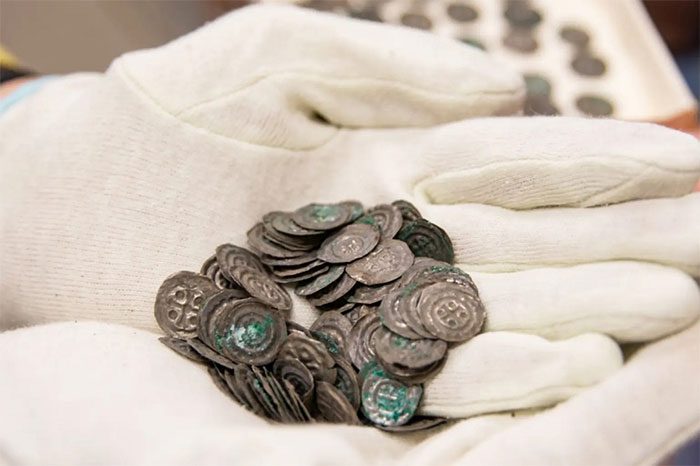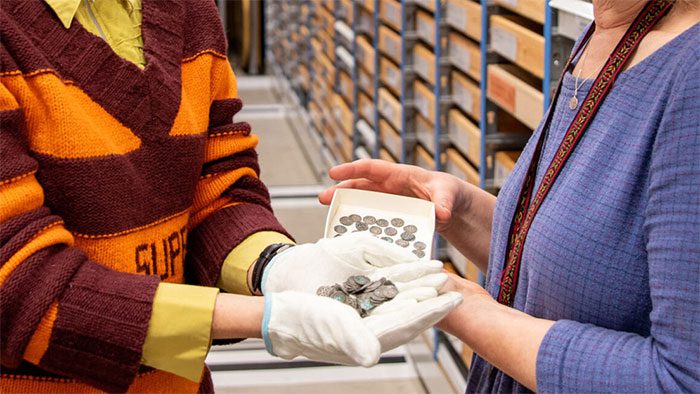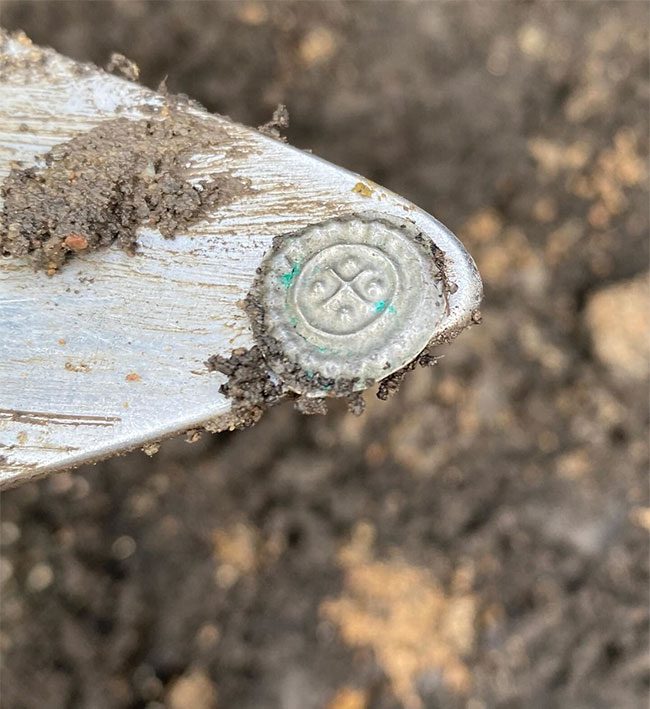Archaeologists have recently uncovered a 12th-century grave during an excavation and found buried treasure alongside it.
Jönköping County Museum announced this discovery in a press release on March 27. The finding took place while excavating a grave in an ancient church on Visingsö, an island in Sweden.
The coins were found in the grave of a man believed to have been around 20 to 25 years old at the time of his death. The coins date from 1150 to 1180.

Swedish archaeologists find 900-year-old coins.
Project director Anna Ödéen explained in a statement: “My colleague Kristina Jansson and I discovered two skeletons in the vault where the grave goods were placed. We cleared the bones of the buried individuals to understand what the graves looked like.
Suddenly, three silver coins appeared! We quickly realized that more coins were lying near the left foot of the buried individual.”
A total of 170 silver coins were found. Bracteates are thin metal discs used as jewelry. While some may see this find as just old metal, Swedish historians say it holds significant meaning for their field.


A Swedish coin expert told the museum that this discovery is ‘absolutely shocking’.
The museum stated: “This discovery is particularly special, partly because there are very few similar finds from that era, and partly because some of the coins are entirely unknown before“.
What puzzles archaeologists is that the coins were found in a grave of a Christian. Burial with a cache of coins was not a common practice among Christians during the Middle Ages.
The press release explains: “It is rare for discoveries to be made in Christian graves, such customs belong to prehistoric times, and this makes the search in Visingsö extraordinary. Why this man in his twenties brought all these coins to the grave remains unknown.
The archaeologists at the county museum hope to uncover more clues as they continue to research this discovery further.”

The coins were found in the grave of a man believed to be around 20 to 25 years old at the time of his death.
A Swedish coin expert told the museum that this discovery is “absolutely shocking”.
Eeva Jonsson from the Royal Coin Cabinet stated in a press release: “This is a completely sensational find that will change the history of medieval coins in Götaland and shed light on a period that is largely unknown.”


















































